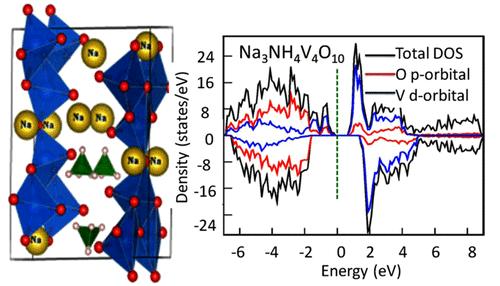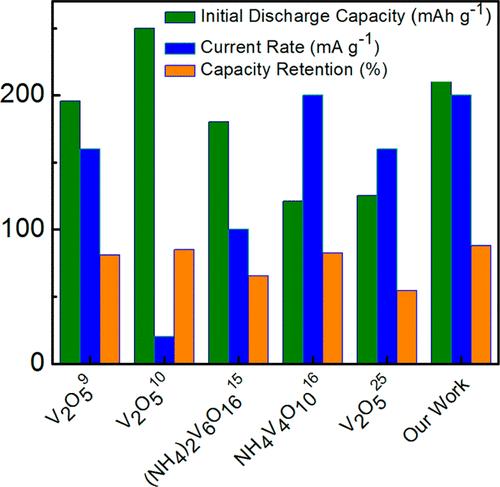This invention presents a new, efficient sodium-ion battery storage system utilizing chemically sodiated zirconium doped ammonium vanadium oxide as a cathode material. This novel battery technology offers a low-cost, high-energy-density solution with excellent cyclic stability, addressing the limitations of current sodium-ion battery technologies.
Existing sodium-ion battery technologies face challenges related to low specific capacity and limited yield, hindering their commercial viability. There is a need for an efficient, cost-effective cathode material that delivers high energy density and prolonged cycle life for better full-cell performance.
- Simple Synthesis: Single-step, low-temperature process using inexpensive materials like table salt and vanadium pentoxide, making it more cost-effective compared to traditional methods.
- High Energy Density: Achieves 220 Wh kg⁻¹ based on the total active mass of anode and cathode, comparable to commercial lithium-ion batteries.
- Superior Performance: Delivers high reversible storage capacity, excellent rate capability, and sustained 83% of initial capacity after 90 cycles with an average Coulombic efficiency of 99.58%.
- Versatility: The process can also be adapted for lithium-ion battery applications.
A 2032 type coin-cell was constructed in an argon-filled glove-box with pre-activated anode materials. Galvanostatic charge-discharge testing at 200 mA g⁻¹ over 1.25 V to 3.7 V showed a specific discharge capacity of 176 mAh g⁻¹ (cathode-based) and a nominal voltage of 2.5 V. The energy density was 440 Wh kg⁻¹ (cathode-based) and 220 Wh kg⁻¹ (total active mass). It retained 83% of initial capacity after 90 cycles with an average Coulombic efficiency of 99.58% and exhibited excellent rate capability.
The technology is in the prototype stage, with successful lab-scale demonstration of the full-cell performance. Galvanostatic charge-discharge testing of prototype at 200 mA g⁻¹ over 1.25 V to 3.7 V showed a specific discharge capacity of 176 mAh g⁻¹ (cathode-based) and a nominal voltage of 2.5 V. The energy density was 440 Wh kg⁻¹ (cathode-based) and 220 Wh kg⁻¹ (total active mass).
3
This sodium-ion full cell battery technology provides a more sustainable and cost-effective alternative to lithium-ion batteries. It supports the transition to renewable energy sources and promotes the development of greener, more efficient energy storage solutions.
- Battery manufacturing
- Energy storage solutions
- Renewable energy sector
- Electric vehicles
Geography of IP
Type of IP
201921017610
525606


